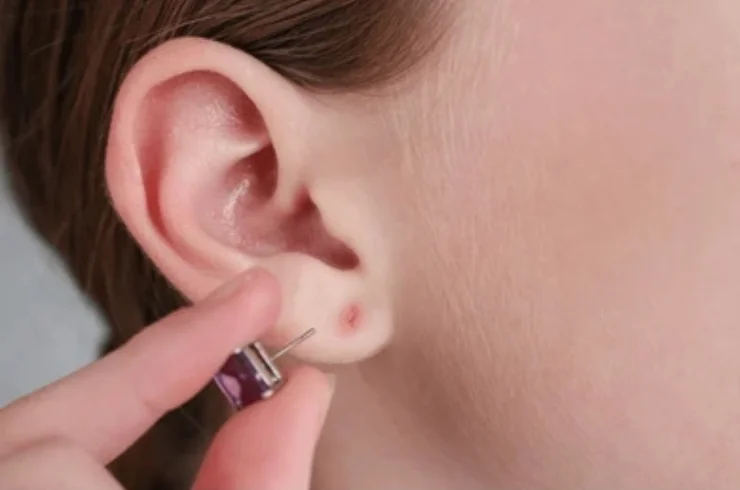Ear Piercing and Ear Lobe Repair: A Guide to Safe and Effective Procedures
Ear piercing, a common procedure, involves creating a hole in the ear for earrings. Methods include piercing guns, offering speed but potentially increasing infection risk due to blunt studs, and sterile needles, favored for precision and reduced tissue damage. Aftercare is vital: clean with saline, rotate earrings, avoid touching the piercing, and monitor for infection. Risks include infection, allergic reactions, keloid formation, scarring, and tearing. Ear lobe repair addresses torn or stretched earlobes. The procedure involves local anesthesia, excision, and suturing. Aftercare includes cleaning, antibiotic ointment, and avoiding pressure. Risks include infection, scarring, poor healing, numbness, and potential recurrence. Consult a healthcare professional for any procedure.

Methods of Ear Piercing:
Ear Piercing Aftercare:
Proper aftercare is crucial to prevent infection and ensure proper healing:
Risks of Ear Piercing:
Ear Lobe Repair
Ear lobe repair, also known as otoplasty, is a surgical procedure to repair torn, stretched, or otherwise damaged ear lobes.
Reasons for Ear Lobe Repair:
Ear Lobe Repair Procedure:
Ear Lobe Repair Aftercare:
Risks of Ear Lobe Repair:
Conclusion:
Ear piercing and ear lobe repair are both common procedures with generally low risks when performed by qualified professionals. Proper hygiene and aftercare are essential for both procedures. If you are considering ear piercing or ear lobe repair, consult a healthcare professional to discuss your options and ensure the best possible outcome.